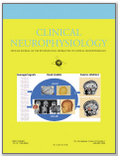 Absent or truncated dystrophin in Duchenne (DMD) and Becker (BMD) muscular dystrophies results in impaired vasodilatory pathways and exercise induced muscle ischemia. Here, the researchers used power Doppler sonography to quantify changes in intramuscular blood flow immediately following exercise in boys with D/BMD.
Absent or truncated dystrophin in Duchenne (DMD) and Becker (BMD) muscular dystrophies results in impaired vasodilatory pathways and exercise induced muscle ischemia. Here, the researchers used power Doppler sonography to quantify changes in intramuscular blood flow immediately following exercise in boys with D/BMD.
The authors quantified changes in intramuscular blood flow following exercise using power Doppler sonography in 14 boys with D/BMD and compared changes in muscle blood flow to disease severity and to historic controls.
Post exercise blood flow change in the anterior forearm muscles is lower in (1) DMD than BMD and historical controls; (2) in non-ambulatory than ambulatory DMD boys; and (3) in muscle with higher echointensity. The tibialis anterior showed similar findings. the clinicians estimate that a single sample clinical trial would require 19 subjects to detect a doubling of blood flow to the anterior forearm after the intervention.
Post-exercise blood flow is reduced in D/BMD and relates to disease severity. This protocol for quantifying post-exercise intramuscular blood flow is feasible for clinical trials in D/BMD.
